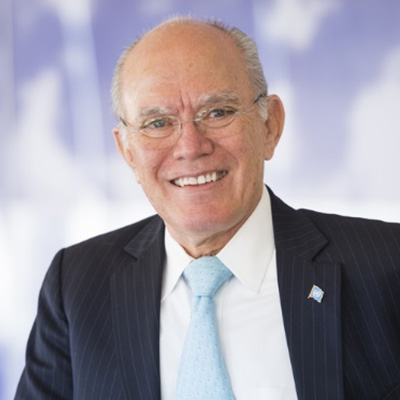Project Description
Hirschsprung’s disease
Hirschsprung’s disease takes his name from Dr. Harald Hirschsprung, a Danish pediatrician. He was the first to describe this condition in 1886. Also, it is known as “aganglionosis” because the main finding in all these patients is that they do not have ganglion cells in the rectum.
What is Hirschsprung’s disease?
Hirschsprung’s disease is a congenital problem; it is not an acquired disease. All the patients with Hirschsprung were born with absences of ganglion cells in the rectum. The lack of these cells causes an obstruction of the large bowel.
Most of these babies present at birth a delay to pass meconium (the dark green poop in newborns) for more than 24 hours or do not have bowel movements. Also, they threw up a yellow/green liquid (bilious emesis), and their belly is bloated (abdominal distention).
No. Hirschsprung disease is not alike in all patients. Although this disease always affects the rectum, ganglion cells’ absence affects the left colon (Long Segment Hirschsprung) or the entire large intestine (Total colonic aganglionosis). It is essential to know the type of Hirschsprung because each one has a different surgical treatment and prognosis.
For a better description, please see the anatomical illustration of a normal colon below and compare it to images of Hirschsprung disease’s three most common types.
At birth, patients with Hirschsprung suffer inflammation of the large intestine, named colitis. The majority born with “mild colitis.” These babies have minor symptoms and may not be diagnosed unless the physician suspects this problem. On the other side of the spectrum, some patients are born with “severe colitis.” These patients present significant abdominal distention, fever, vomiting, dehydration, and some have an intestinal perforation (a large intestine rupture).
Hirschsprung is confirmed with an adequate rectal biopsy obtained at the baby’s bedside or in the operating room. The surgeon should guarantee a sufficient sample. Then, the rectal tissue is analyzed by an experienced pathologist in Hirschsprung. Usually, the result is ready in 24-48 hours.
Once the biopsy confirms the diagnosis, we perform a “Contrast Enema for Hirschsprung.” This singular study is performed by an experienced pediatric radiologist to achieve our goal: demonstrate the narrowed aganglionic segment and the area where the dilated part (with ganglion cells) arises. This area is called the “Transitional Zone.” When this study is performed correctly, we can estimate the intestine’s length with Hirschsprung and plan the proper medical and surgical treatment.
Yes. Hirschsprung’s disease has symptoms like constipation, allergies to some components of formula lactose intolerance, enterocolitis, and intestinal infections. These similarities produce a delayed diagnosis of Hirschsprung in some patients. It is essential to rule out Hirschsprung in all patients with an early onset of constipation.
As we previously described, Hirschsprung’s has different clinical expressions. Also, it could affect different length segments, so we will explain the “standard” approach remarking some variables in each stage.
How is Hirschsprung’s disease treated?
As we previously described, Hirschsprung’s has different clinical expressions. Also, it could affect different length segments, so we will explain the “standard” approach remarking some variables in each stage.
What can I expect for my son/daughter after the pull-through?
Many children with Hirschsprung’s disease are doing well after the pull-through. However, there is a group of children with postoperative functional problems needing long-term follow-up.
1) One such problem is colitis that affects around 30% of the patients. It occurs at any time after the pull-through. Patients present intestinal obstruction (Hirschsprung-like symptoms), abdominal distention, smelly loose stools (diarrhea-like), vomiting, and fever. These symptoms could be mild to severe and should be treated immediately, or better yet, should be prevented. Please read below about colonic irrigations.
2) Other groups of patients may suffer fecal incontinence. Most of them are diagnosed at 3 to 4 years of age. The parents recognize that their children cannot use regular underwear due to fecal soiling and cannot achieve bowel control. The most common cause is damage to the anal canal during the pull-through.
3) Finally, constipation is a problem that other patients may suffer after the pull-through.
What are colonic irrigations? Why should I know how to make it?
The anal canal is the end of the large bowel and is localized between the rectum and anus. The anal canal possesses the elements for fecal continence. This segment should be preserved during the pull-through. The bowel with ganglion cells should be anastomosed (connected) to the rectum in the proximity of the anal canal, a few millimeters above the dentate line.
The consequence of conserve this structure (the anal canal) is that we leave a short zone with “obstructive-functional Hirschsprung’s disease,” which is usually overcome for the remaining ganglionated bowel. For unknown causes, some patients develop obstruction to the outflow. It causes stasis of stool, bacterial overgrowth, and the colon’s inflammation named “colitis” An inflamed bowel does not have regular propulsive movements worsening the obstruction.
In patients with “obstructive colitis,” colonic irrigations are needed to remove the stool, clean (washout) the colon, and prevent stasis of feces, helping to take control of bacterial overgrowth.
Related Articles
Anorectal Malformation
What are anorectal malformations? Anorectal malformations are defects that occur during the fifth to seventh week of fetal [...]









